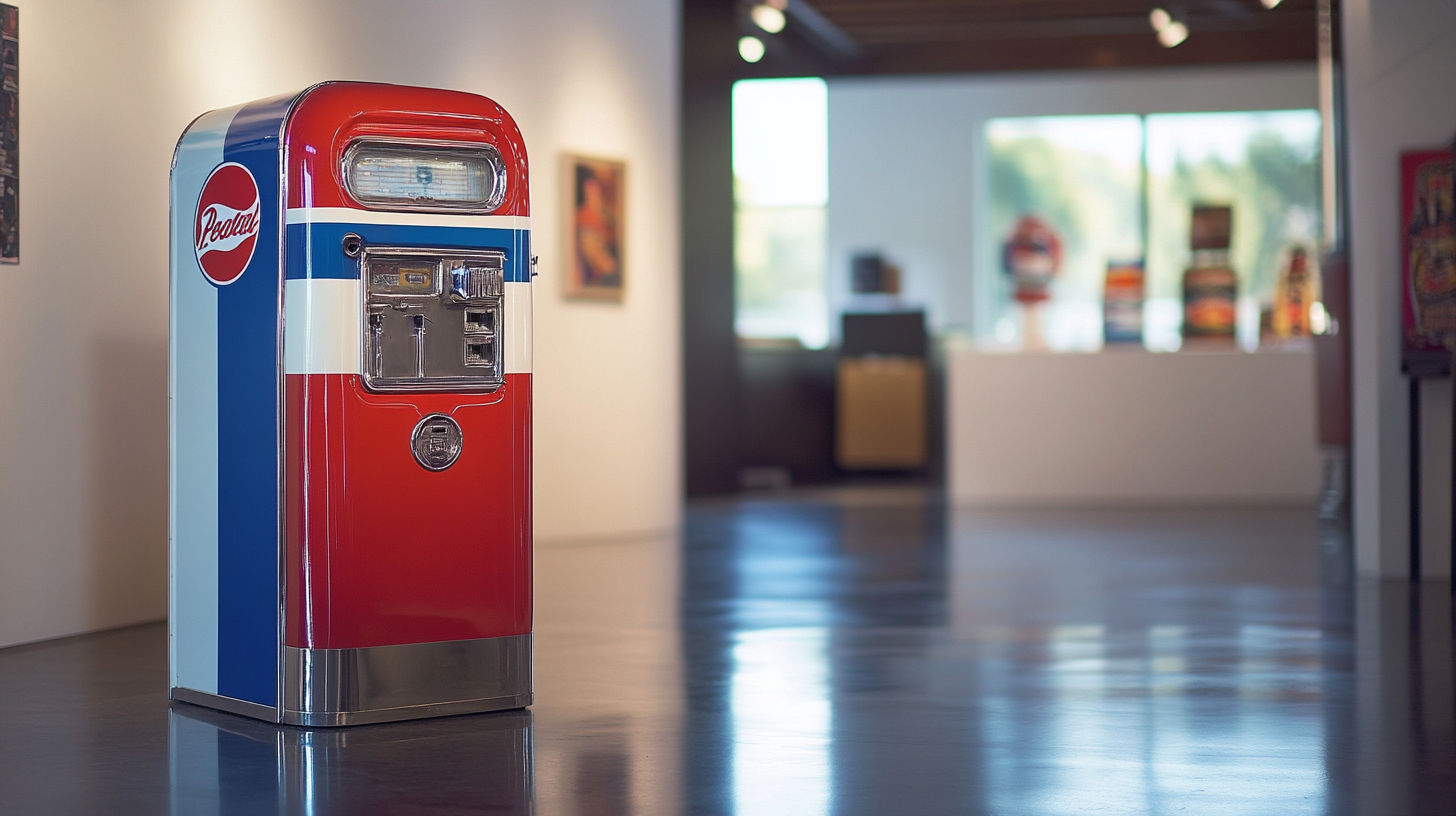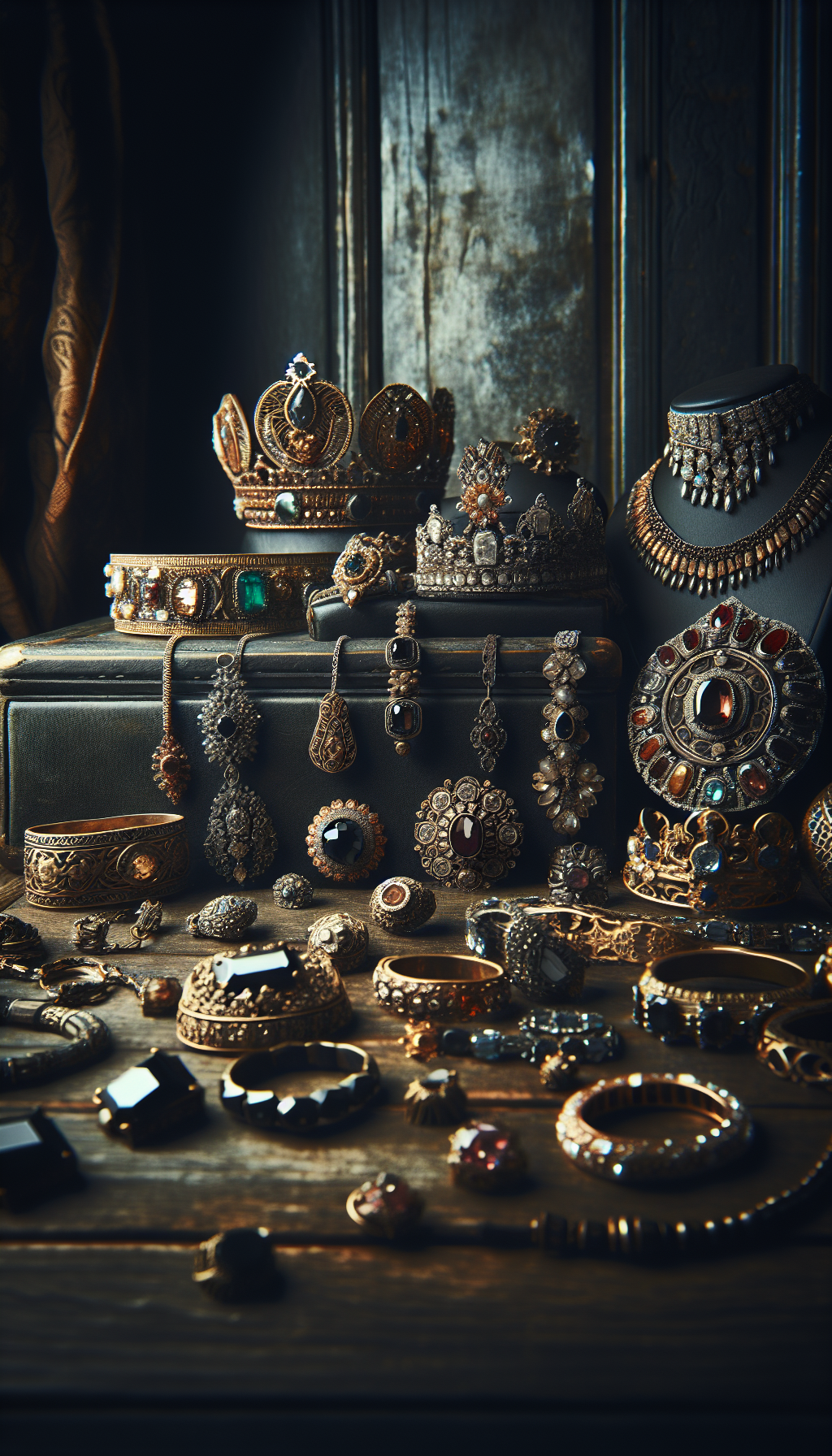Vintage Pepsi vending machines represent a nostalgic piece of American pop culture that has captivated collectors for decades. These retro appliances not only serve as functional conversation pieces but can also be valuable investments. Whether you’ve discovered an old Pepsi machine in a garage, are considering purchasing one, or are simply curious about their worth, understanding the valuation factors is essential.
In this comprehensive guide, we’ll explore the factors that influence vintage Pepsi machine values, identify popular models from different eras, and provide current market pricing to help you determine what your old Pepsi machine might be worth.
Key Value Factors for Vintage Pepsi Machines
Age and Era
The age of a Pepsi machine is one of the primary determinants of its value. Generally, machines from the 1950s and earlier command the highest prices, followed by those from the 1960s and 1970s. The specific era can be identified through design elements, logos, and manufacturing details.
Brand and Manufacturer
While all Pepsi machines feature the iconic Pepsi branding, the actual manufacturers varied over the decades. Common manufacturers include:
- Vendorlator Manufacturing Company (VMC)
- Vendo Company
- Ideal
- Cavalier
- Westinghouse
Machines made by certain manufacturers like Vendorlator are particularly sought after by serious collectors.
Condition
As with most collectibles, condition dramatically impacts value. Factors include:
Condition Assessment Checklist
Key factors that affect a vintage Pepsi machine's value
- Exterior condition (paint, decals, and logos intact)
- Interior condition (clean, free of rust)
- Working mechanical components
- Functioning refrigeration system
- Original hardware and parts
- Proper electrical system
- Door operation and seal integrity
Restoration Status
The restoration status of a vintage Pepsi machine falls into several categories:
- Original Unrestored: Machines in original condition with patina may appeal to purists.
- Partially Restored: Machines with some updated components but retaining original elements.
- Fully Restored: Completely refurbished to like-new or better-than-original condition.
- Project Machine: Non-working machines that need significant restoration work.
Rarity and Desirability
Some Pepsi machine models were produced in limited quantities or have distinctive features that make them more desirable to collectors. Special editions, unusual designs, or machines with unique historical significance can command premium prices.
Vintage Pepsi Machine Market Highlights
Popular Vintage Pepsi Machine Models and Their Values
1950s Models
The 1950s represents a golden era for vintage soda machines, with many classic designs that are highly prized by collectors today.
VMC Vendorlator 81
The Vendorlator 81 is one of the most iconic vintage Pepsi machines, featuring a distinctive vertical design and often showcasing the classic “bottle cap” Pepsi logo.
- Year: 1958
- Capacity: 81 bottles
- Value Range: $3,000-$16,000 depending on condition
- Notable Features: Distinctive rounded top, chrome trim, and iconic styling
A fully restored 1958 VMC Vendolator-81 Pepsi Machine was listed by The Games Room Company for £16,000 (approximately $20,000), highlighting the premium value these machines can command when professionally restored.
Vendorlator PC27B
Another classic model from the 1950s era:
- Year: 1953
- Capacity: 27 bottles
- Value Range: $1,200-$4,000
- Notable Features: Coin-operated, compact design for standard 8oz bottles
1960s Models
The 1960s introduced more streamlined designs as vending machine technology evolved.
Vendorlator VF-90
- Year: Early 1960s
- Value Range: $1,200-$1,400 for unrestored, $2,500-$4,000 for restored models
- Notable Features: Side-door loading, improved refrigeration system
According to an antique expert on JustAnswer, a vintage 1960s Vendorlator vending machine typically holds a market value of $1,200-$1,400 in original condition.
VMC 33 Pepsi Machine
- Value Range: $3,000-$4,000 for working models in good condition
- Notable Features: Sleek design, improved reliability
A VMC 33 Pepsi Machine in good working condition was recently listed on eBay for $3,750, described as “all original/runs and cools” and in “great shape.”
1970s Models
The 1970s saw more modern designs with improved functionality and reliability.
- Value Range: $200-$1,500 depending on condition and model
- Notable Features: More electronic components, updated logos and styling
Vintage Pepsi machines from the 1970s are generally more common and therefore typically less valuable than their older counterparts, but well-preserved or restored examples can still command respectable prices.
Vintage Pepsi Machine Value Guide
Current market price ranges based on era and condition
</tbody>
</table>
Special Models with Premium Value
Ideal 55 Pepsi Cooler
The Ideal 55 Pepsi Cooler from the 1930s represents one of the earliest commercial Pepsi vending solutions:
- Era: 1930s
- Value Range: $4,000-$10,000+ when fully restored
- Notable Features: 10-cent vending, distinctive horizontal cooler design
Man Cave Art Factory offers fully restored Ideal 55 Pepsi Coolers that have been meticulously returned to original, historically accurate condition while maintaining full functionality.

Limited Edition and Promotional Models
Occasionally, Pepsi produced special edition vending machines for promotions or significant events. These rare models can be particularly valuable to collectors focused on Pepsi memorabilia.
Evolution of Pepsi Machine Designs
- 1930s
Early Coolers
Horizontal cooler-style machines like the Ideal 55 marked Pepsi's early entry into vending. These simple machines cooled bottles in ice water. - 1940s
Post-War Expansion
After World War II, vending machine production increased with more sophisticated cooling systems and improved reliability. - 1950s
Golden Age
The classic era of soda machines with iconic designs like the Vendorlator 81 and eye-catching chrome details. Many collectors consider these the most desirable vintage models. - 1960s
Modernization
Sleeker designs with improved functionality and reliability. The Pepsi logo evolved during this period, affecting machine aesthetics. - 1970s
Mass Production
More standardized designs with greater production numbers, making these machines more common today but still collectible.
Buying and Selling Vintage Pepsi Machines
Where to Find Vintage Pepsi Machines
Popular marketplaces for vintage Pepsi machines include:
- eBay: Offers a wide selection of machines at various price points and conditions
- Specialty Dealers: Companies like The Games Room Company that specialize in restored machines
- Online Classifieds: Craigslist, Facebook Marketplace often have local listings
- Antique Shows and Flea Markets: Good for finding unrestored project machines
- Auction Houses: For rare or particularly valuable models
Tips for Buyers
If you’re in the market for a vintage Pepsi machine:
- Research thoroughly: Understand the specific model you’re interested in and its typical price range.
- Verify functionality: If possible, see the machine in operation before purchasing.
- Examine restoration quality: For restored machines, check the authenticity and quality of the restoration work.
- Consider transportation: These machines are extremely heavy and may require specialized moving services.
- Factor in additional costs: Restoration, repairs, and ongoing maintenance can add significantly to the initial purchase price.

Tips for Sellers
When selling a vintage Pepsi machine:
- Know your market: Understand whether your machine appeals to collectors, decorators, or restoration enthusiasts.
- Document history and condition: Provide detailed photos and information about the machine’s history, working status, and any restoration work.
- Set realistic expectations: Price according to comparable recent sales, not aspirational values.
- Consider multiple selling venues: Different platforms may reach different buyer segments.
- Be prepared to negotiate: The vintage machine market often involves some price negotiation.
Restoration Considerations
DIY vs. Professional Restoration
Restoring a vintage Pepsi machine can be approached in different ways:
- DIY Restoration: Allows for personal involvement but requires significant skills in mechanics, refrigeration, electrical systems, and cosmetic restoration.
- Professional Restoration: Typically costs $1,500-$5,000+ depending on the machine’s condition and restoration goals, but ensures proper functionality and appearance.
Authenticity Concerns
When evaluating a restored machine, consider:
- Original vs. Reproduction Parts: Original parts generally maintain higher collector value.
- Historical Accuracy: Period-correct paint colors, decals, and hardware enhance value.
- Functional Modifications: Modern refrigeration updates may improve usability but could affect collector value.
Cost-Benefit Analysis
Not every machine is worth restoring. Consider:
- Initial Purchase Price + Restoration Costs: Should not exceed the machine’s potential market value after restoration.
- Rarity Factor: Rare models may justify higher restoration investments.
- Intended Use: For personal enjoyment, restoration decisions may differ from investment-focused restorations.
Common Questions About Vintage Pepsi Machine Values
How can I identify what model my old Pepsi machine is?
To identify your vintage Pepsi machine model:
- Look for a manufacturer’s plate or tag (often found inside the machine)
- Note distinctive design features like door style, logo placement, and dimensions
- Research the Pepsi logo style to narrow down the era (Pepsi’s logo evolved significantly)
- Consult specialty forums or collector guides with detailed model information
- Compare photos of your machine to known models from reference sources
The manufacturer (Vendorlator, VMC, Vendo, etc.) and any model numbers are particularly helpful for precise identification.
Are unrestored or original condition Pepsi machines worth more than restored ones?
Whether an unrestored or restored Pepsi machine is more valuable depends on several factors:
- For extremely rare machines in good original condition, the unrestored state may be preferred by purist collectors
- For common models, professionally restored machines typically command higher prices
- Machines with poor quality restorations may be worth less than unrestored examples
- Original machines with working mechanics but cosmetic wear often fall in the middle of the value range
The collectibles market generally values machines that both look good and function properly, which usually means some level of sympathetic restoration.
How much does it cost to ship a vintage Pepsi machine?
Shipping a vintage Pepsi machine is expensive due to their size and weight:
- Local delivery (within 100 miles): $200-$500
- National shipping: $500-$1,200 depending on distance
- Specialized freight services: Often required due to weight (300-500+ lbs)
- Crating costs: Additional $200-$400 for proper protection
Many sellers prefer local pickup to avoid shipping complexities. If shipping is necessary, using services that specialize in moving arcade machines and vending equipment is recommended for proper handling.
What's the difference between a Coca-Cola and Pepsi vending machine in terms of collector value?
In the collector market:
- Coca-Cola machines generally command higher prices due to broader collector interest
- Pepsi machines often represent better value for decorative purposes
- Certain rare Pepsi models can exceed common Coca-Cola machine values
- Both brands follow similar valuation patterns regarding age, condition, and rarity
Coca-Cola’s more established collectibles market tends to drive higher average prices, but exceptional Pepsi machines from the 1950s and earlier can be equally valuable to the right collector.
How can I determine if my Pepsi machine is actually rare or valuable?
To determine if your Pepsi machine is genuinely rare or valuable:
- Research completed sales (not just asking prices) of similar models
- Consult price guides from reputable sources like soda machine collector organizations
- Get an appraisal from an expert in vintage vending machines
- Look for distinguishing features that might indicate limited production
- Research the production history of your specific model
Be wary of sellers claiming extreme rarity without supporting evidence. True rarity is often documented in collector literature and reflected in consistent high values across multiple sales.
How much electricity does an old Pepsi machine use?
Vintage Pepsi machines can be energy-intensive compared to modern appliances:
- Original unmodified machines: May use 7-12 kWh per day ($30-$70 monthly)
- Machines with retrofitted modern cooling: Usually 3-5 kWh per day ($15-$30 monthly)
- Factors affecting consumption: Ambient temperature, frequency of use, door seal condition
Many collectors choose to update the refrigeration systems with modern, energy-efficient components, which can significantly reduce operating costs while maintaining the vintage appearance.
How can I get parts for my vintage Pepsi machine?
Finding parts for vintage Pepsi machines requires resourcefulness:
- Specialized restoration suppliers: Companies like VintageVending.com and AntiqueAppliances.com
- Online forums: VendingCertification.com and CollectorCafe.com often have parts exchanges
- Donor machines: Purchasing non-working machines for parts
- Custom fabrication: For truly unobtainable parts
- Refrigeration adaptations: Modern cooling systems can be adapted to fit vintage cabinets
The availability of parts varies greatly by model and age. Earlier machines (pre-1960s) often have the most challenging parts sourcing issues.
Will Pepsi give you a vending machine or help with restoration?
Pepsi (PepsiCo) generally does not:
- Provide vintage machines to individuals
- Offer restoration services for collector machines
- Maintain parts inventories for discontinued vintage models
Unlike some misconceptions, soda companies don’t typically provide free machines to businesses either. For a modern Pepsi vending machine, businesses must meet specific qualifications:
- Office/manufacturing locations need at least 40 full-time employees
- Retail locations require 60+ employees for break room placement
- Public access machines typically require locations with 100+ people
These requirements apply to modern machines, not vintage collectors’ items. For vintage machine restoration, specialized restoration companies are the appropriate resource.
Investment Potential of Vintage Pepsi Machines
Appreciation Trends
Over the past two decades, well-maintained vintage soda machines have generally appreciated in value:
- Premium 1950s models have seen approximately 5-10% annual appreciation
- Machines from the 1960s show more modest but steady increases
- Later models (1970s+) typically appreciate at lower rates unless particularly rare
Market Fluctuations
The vintage Pepsi machine market experiences cycles influenced by:
- Broader nostalgia trends
- Interior design fashions (industrial, retro themes)
- Economic conditions affecting discretionary purchases
- Television shows featuring vintage Americana
Collecting vs. Flipping
Different approaches to vintage Pepsi machine ownership include:
- Long-term collecting: Focusing on preservation and gradual appreciation
- Restoration and resale: Purchasing unrestored machines, improving them, and selling at a premium
- Display and enjoyment: Valuing the machines primarily for their aesthetic and nostalgic appeal rather than investment potential
External Resources for Vintage Pepsi Machine Collectors
eBay Vintage Pepsi Machine Listings
Browse current listings for vintage Pepsi machines, with prices ranging from project machines to fully restored collectors' items. Useful for understanding current market values.
The Games Room Company - Vintage Vending
Specializes in premium restored vintage vending machines, including rare Pepsi models like the Vendolator-81 from 1958. Their listings represent the high end of the market.
Just Answer - Antique Expert Appraisals
Professional appraisal service where experts provide valuations and authentication information for vintage vending machines and other collectibles.
Man Cave Art Factory - Restoration Services
Offers restoration services and sells fully restored vintage soda machines, including the rare Ideal 55 Pepsi Cooler from the 1930s.
Arcade Museum Forums - Collector Community
Active community of collectors discussing vintage vending machine values, restoration techniques, and identification help for obscure models.
Vending Group - Modern Pepsi Machine Information
While focused on modern vending solutions, provides context on current Pepsi machine requirements and can help differentiate vintage from modern machines.
Conclusion
Vintage Pepsi machines represent a fascinating intersection of nostalgia, functional art, and investment potential. Their values span from affordable project machines at a few hundred dollars to premium restored pieces worth $16,000 or more.
When evaluating the worth of a vintage Pepsi machine, consider its age, model, condition, restoration status, and rarity. The most valuable machines typically come from the 1950s and earlier, with fully restored examples in working condition commanding the highest prices.
Whether you’re a casual enthusiast looking to add a conversation piece to your space, a serious collector building a vintage vending machine collection, or someone who discovered an old Pepsi machine and wants to know its value, understanding these factors will help you make informed decisions.
Remember that beyond monetary value, these machines preserve an important piece of American commercial history and pop culture—a tangible connection to decades past when a cold Pepsi cost just a nickel or dime.
Get a Professional Appraisal
Unsure about your item’s value? Our certified experts provide fast, written appraisals you can trust.
- Expert report with photos and comps
- Fast turnaround
- Fixed, upfront pricing
No obligation. Secure upload.
| Category | Price | Notes |
|---|---|---|
| 1950s Models (Restored) | $3,000-$16,000+ | Premium for rare models like Vendorlator 81 |
| 1950s Models (Unrestored) | $800-$3,000 | Functioning but not cosmetically restored |
| 1960s Models (Restored) | $2,000-$4,000 | Fully functional with restored appearance |
| 1960s Models (Unrestored) | $600-$1,400 | Working condition with original patina |
| 1970s Models (Restored) | $800-$1,500 | More common but still collectible |
| 1970s Models (Unrestored) | $200-$800 | Project machines or partially working |
| Non-Working Project Machines | $50-$300 | Value primarily in restoration potential |




